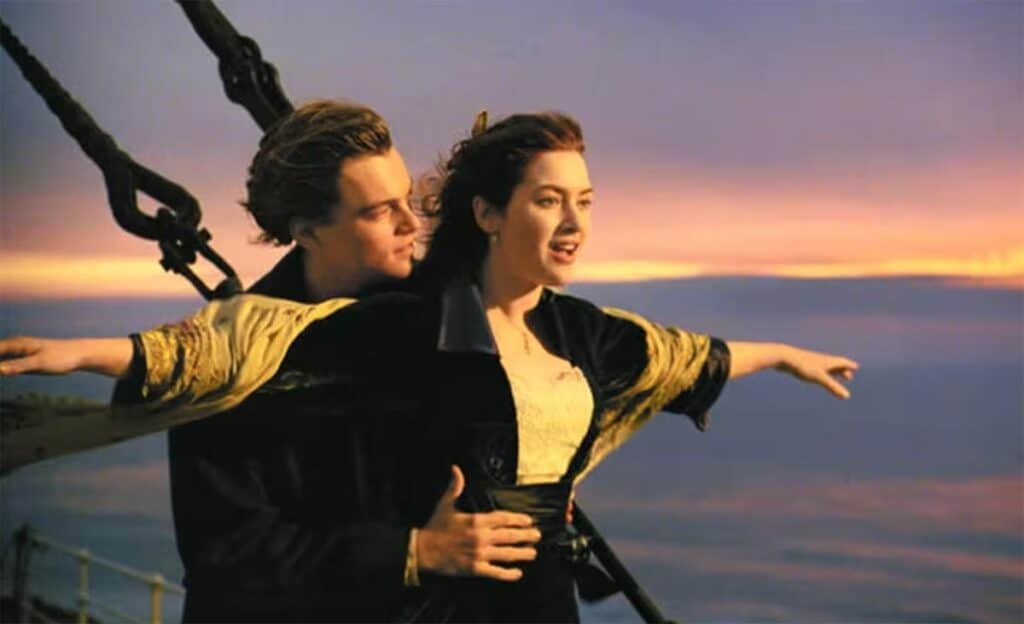
Sean Bloom, a 21-year-old Jewish Gen Z, was in talks to join the expedition aboard Titan, which would explore the wreck of the Titanic. Bloom’s insistence that it was not safe saved him and his father Jay’s life.
The tragedy on June 18, 2023, caught the attention of the world as all five passengers died on the Titan submersible — Oceangate founder Stockton Rush, Paul Henri Nargeolet, Hamish Harding, Shahzada Dawood and his son Suleman Dawood. Their story is featured in ABC’s “Truth and Lies: Voyage To The Titanic,” available on Hulu.
Why didn’t Sean Bloom board Titan?
On the show, Bloom says he had been obsessed with the Titanic and would often write about the topic for school papers. He was initially excited to join the expedition but saw security concerns.
Bloom says he saw a video in which Rush explained the submersible was powered by a Logitech game controller. This raised serious safety concerns, as consumer-grade gaming controllers are not designed for critical operations. Even worse, a significant portion of the ship was made of carbon fiber.
“I was like dude, carbon fiber cannot do that,” Bloom says on the show. “I knew carbon fiber couldn’t survive those kinds of pressures. It’s not what it’s used for.”
Bloom said a text from Rush implied that he was simply not informed, so the young man decided against participating.
His father, billionaire Jay Bloom, said Rush kept pressing them to join in text messages, even reducing the price from $250,000 a person to $150,000, but the younger Bloom said that security, not price, was the issue.
“I knew he was wrong,” Bloom said on an American Negotiation Institute podcast. “Red flags all over the place.”
He said he was not convinced by Rush’s passion and instead stuck to his logic, knowing that other successful missions used better vessels.
“I’m just overall a critical person,” Bloom explained in the podcast interview. “People will say anything to get whatever it is that they want…In my head, it was a no-brainer. I’m no submarine expert…all I did was Google searches and YouTube videos.”
When he learned about the disaster, he thought the submersible either got stuck in the Titanic or imploded due to pressure.
Bloom said he was sad to learn about the father and son who took their place on the ship and died.
“But for the grace of God, that could have been us,” the elder Bloom said.
James Cameron, director of the famed “Titanic” film

Much of the fascination about seeing the wreckage of the Titanic comes from James Cameron’s famed 1998 film featuring Leonardo DiCaprio and Kate Winslet.
On this show, Cameron explains that the sea is unforgiving and while he made more than 30 trips to view the Titanic wreckage himself, it was done safely and he did not approve of Titan’s excursion.
Why did it grab the world’s attention?
The idea of people trapped on the ocean floor, bolted in with 96 or so hours of air left, made people wonder how they’d feel in that situation with the great hope that they could be saved. But it was later discovered that a catastrophic event likely caused the submersible’s destruction.
Some theorize that the repeated trips may have degraded the carbon fiber in ways that were microscopic and could not be seen. The sinking of the Titanic was largely attributed to hubris, as other ships had halted for the night, but everyone thought the Titanic was unsinkable.
Here, too, there was hubris in assuming that the material not normally used would be safe. While most submersibles are constructed in a sphere, Titan’s cylindrical shape made it more vulnerable, according to experts.
The show includes footage of Rush mocking safety concerns. There is also footage of Mike Reiss, showrunner of “The Simpsons” who participated in a voyage and returned safely. However, Reiss admitted that the waiver he had to sign contained numerous clauses detailing potential risks, including the possibility of death.
“When you’re trying something outside the box, people inside the box think you’re nuts,” Rush says on the show in a clip taken from past footage.
The trips required people to sit without chairs for the duration of the two-and-a-half-hour descent to reach the Titanic wreckage.
The lessons from Bloom’s life-saving decision
On the podcast, Bloom said he thought Rush did not have enough experience, and that he did not trust the vessel. His father emphasized that even individuals well-versed in a subject can have their judgment clouded by passion. In matters of life and death, pleas of passion should never override factual substance.
“I don’t think he could have persuaded me to go,” Bloom said, adding that he knew advisors told Rush it was not safe.
It is believed that Titan imploded on the way down. Jay Bloom said the surreal experience was akin to if someone missed their flight on September 11.
Originally Published Feb 13, 2024 06:06PM EST


